Abstract
Using data from the Channeling experiment, this article analyzes the factors associated with the amount of formal and informal home care received by the disabled elderly. The amounts of formal and informal home care used increase with disability, as well as with other measures of need for care. The use of formal care increases, and the use of informal care decreases, with income. The availability of immediate family increases reliance on informal care and reduces reliance on formal care. The findings have implications for the design of proposed programs to expand publicly financed home care for the disabled elderly.
Full text
PDF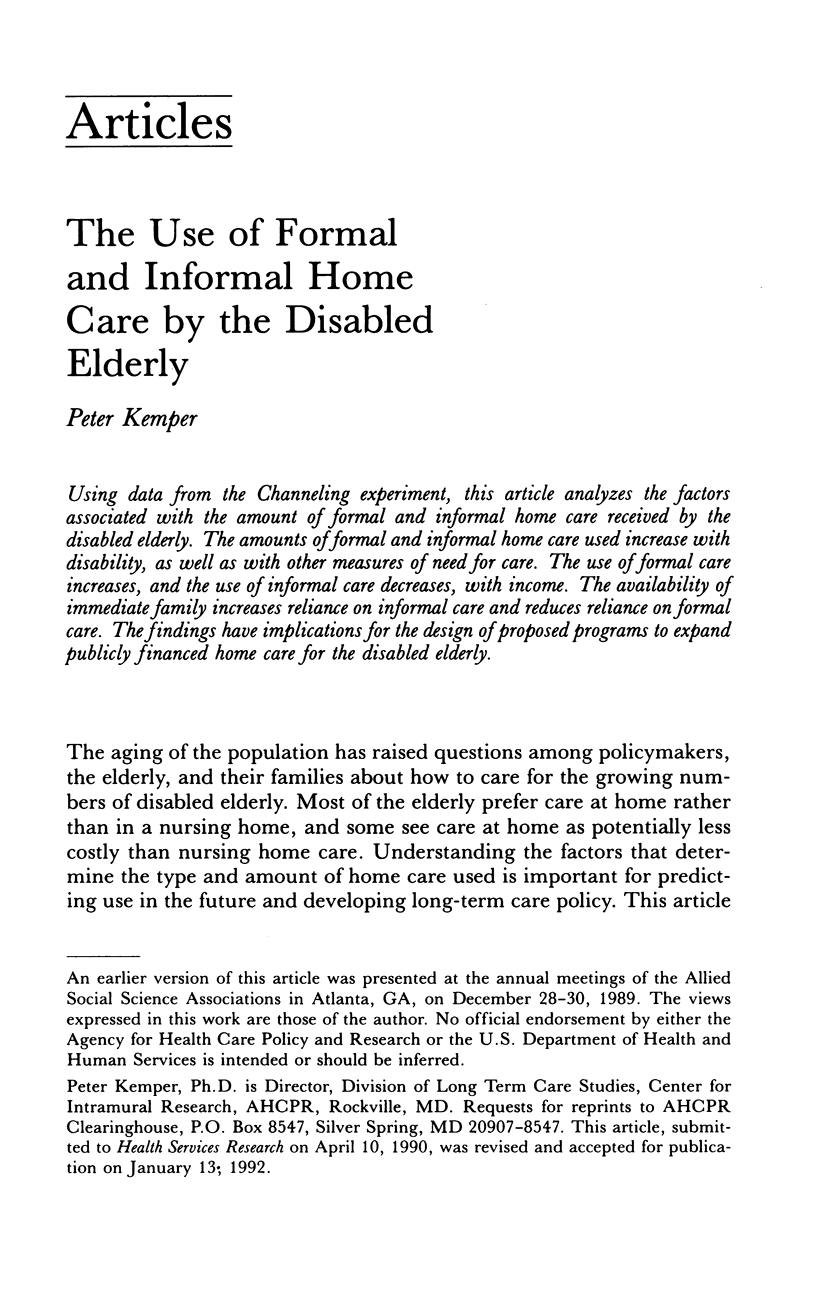
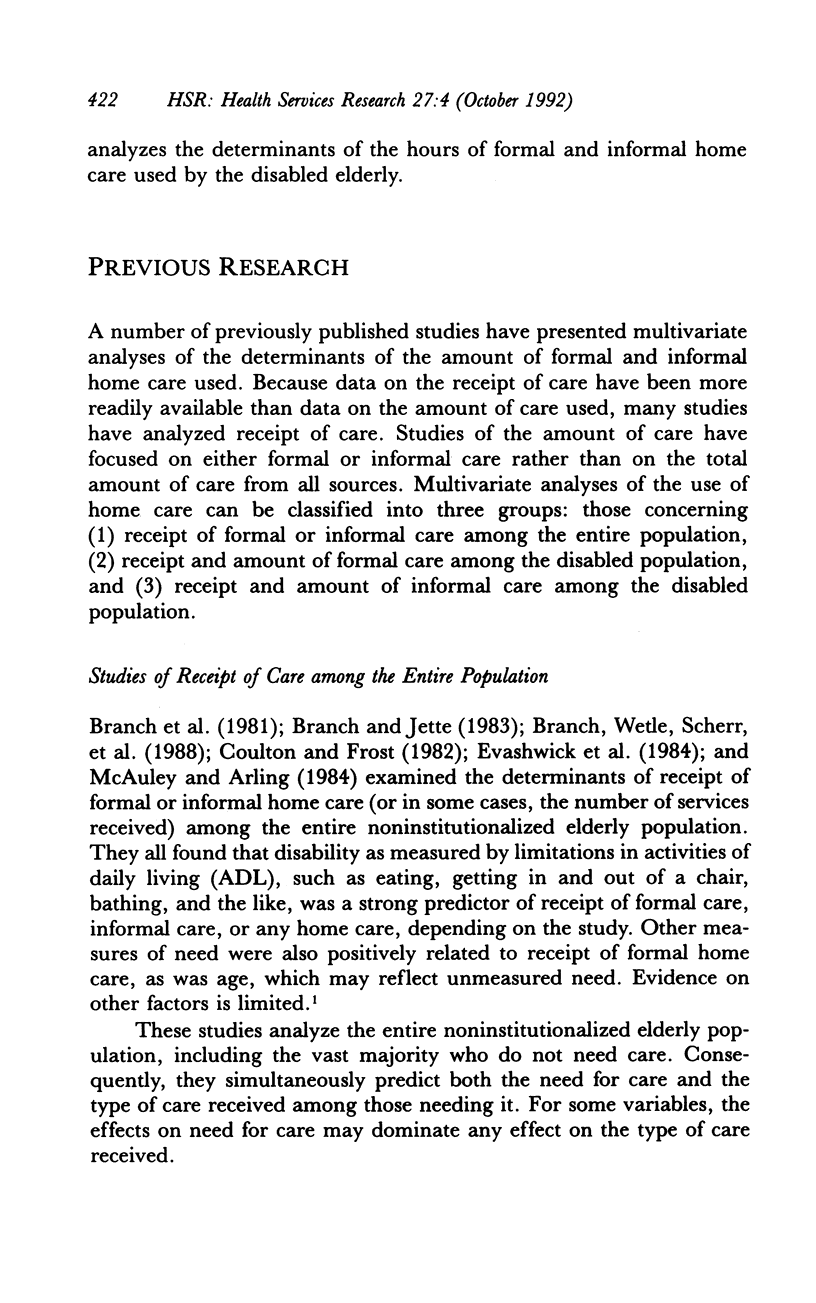
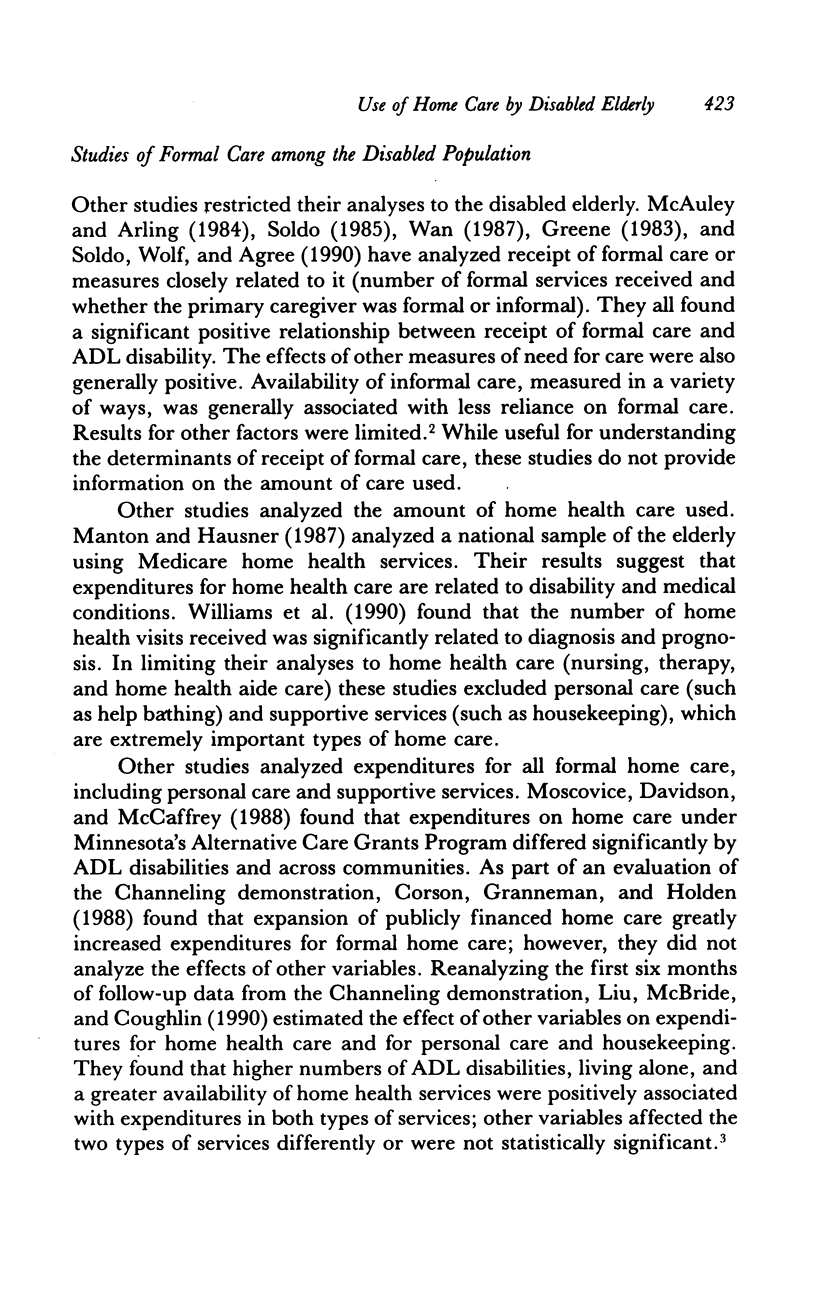
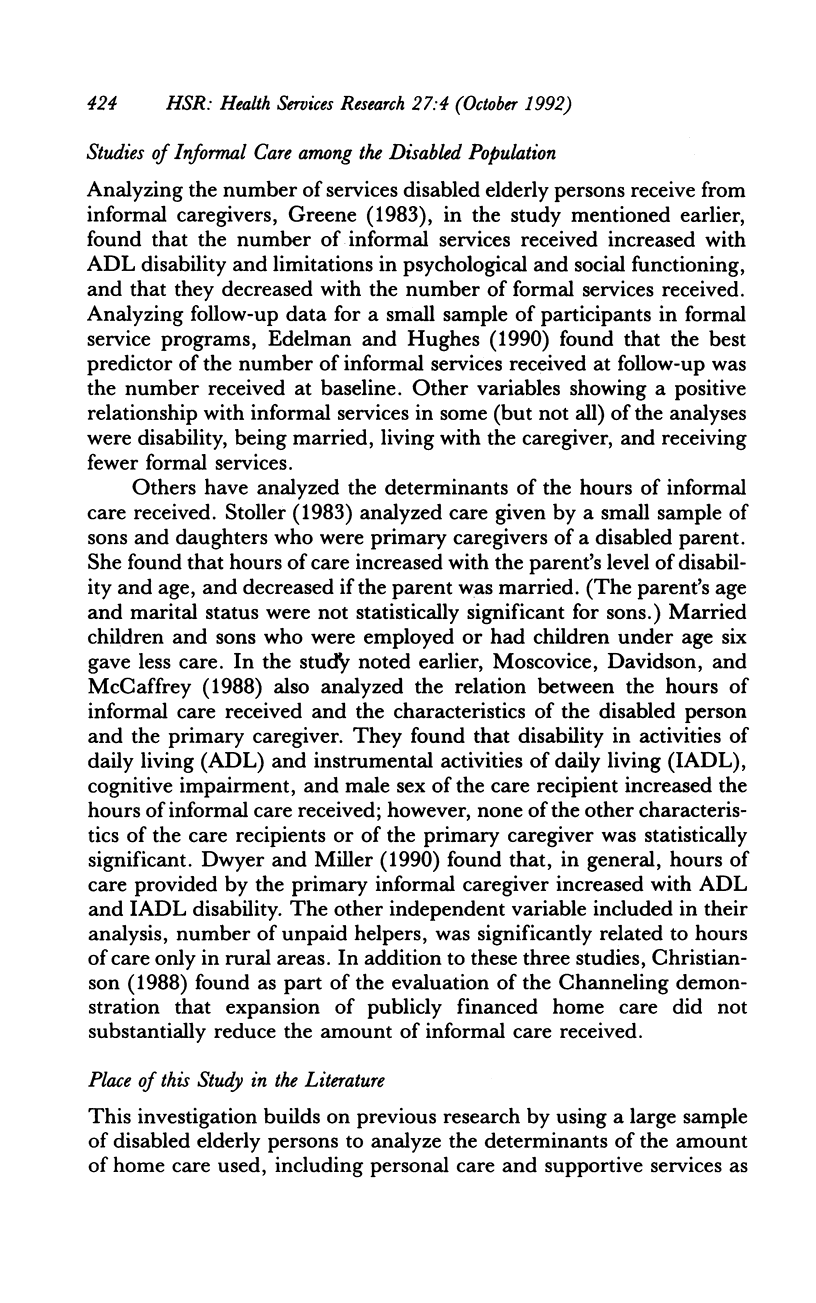
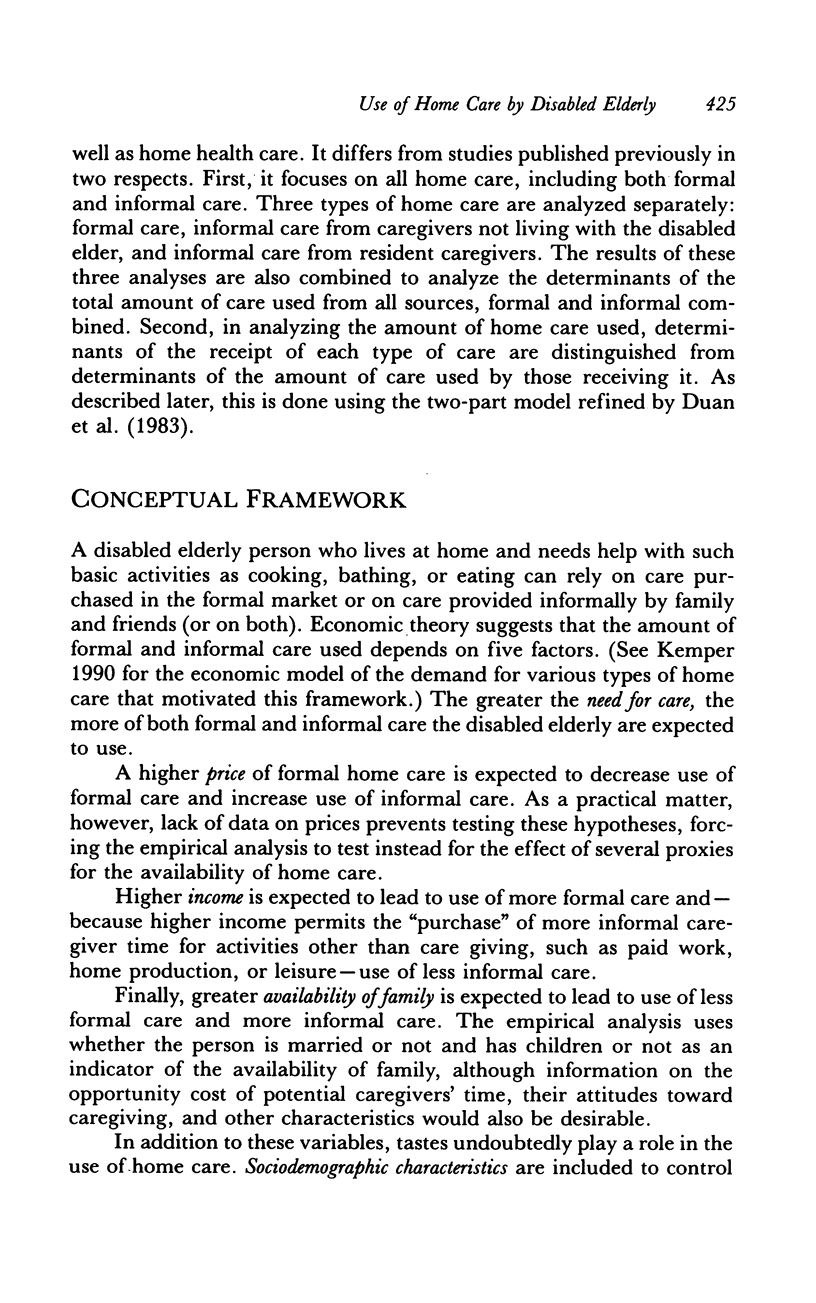
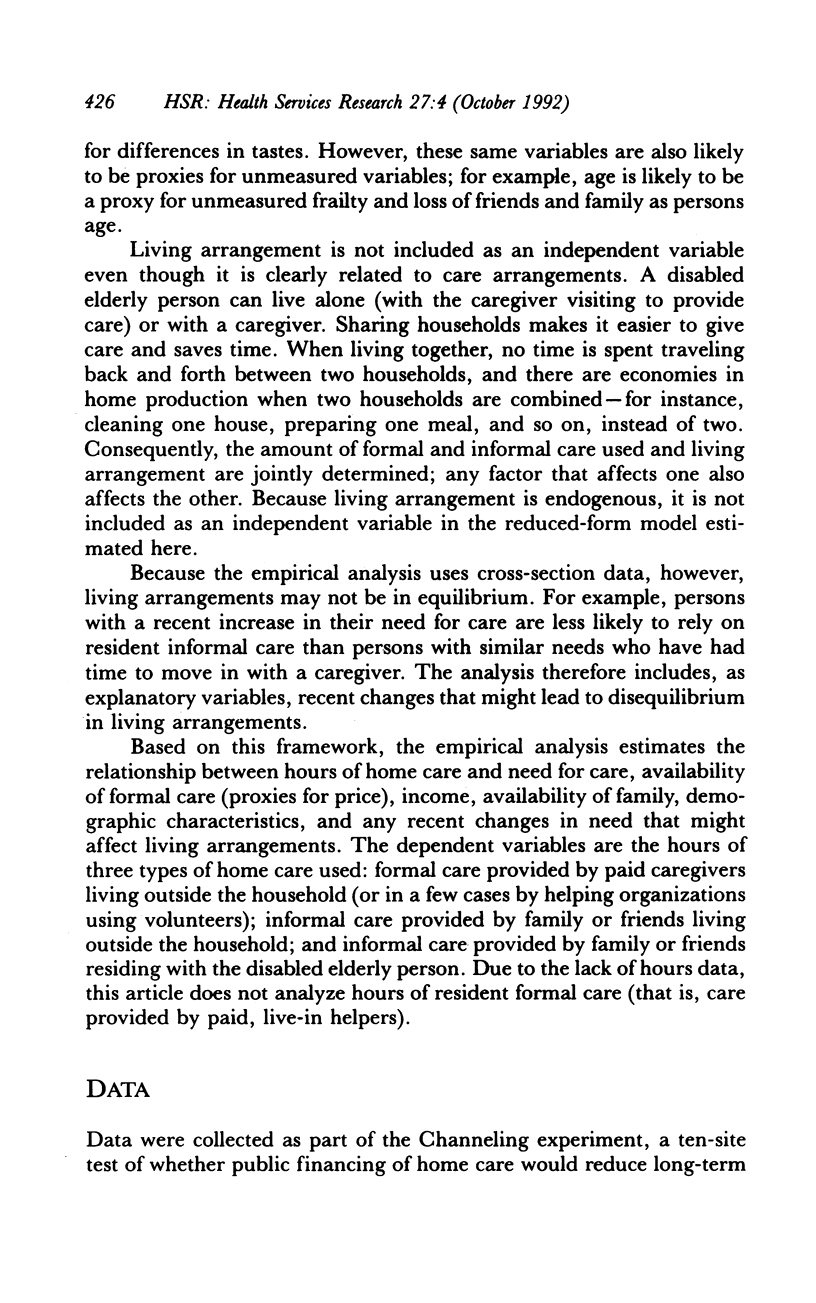
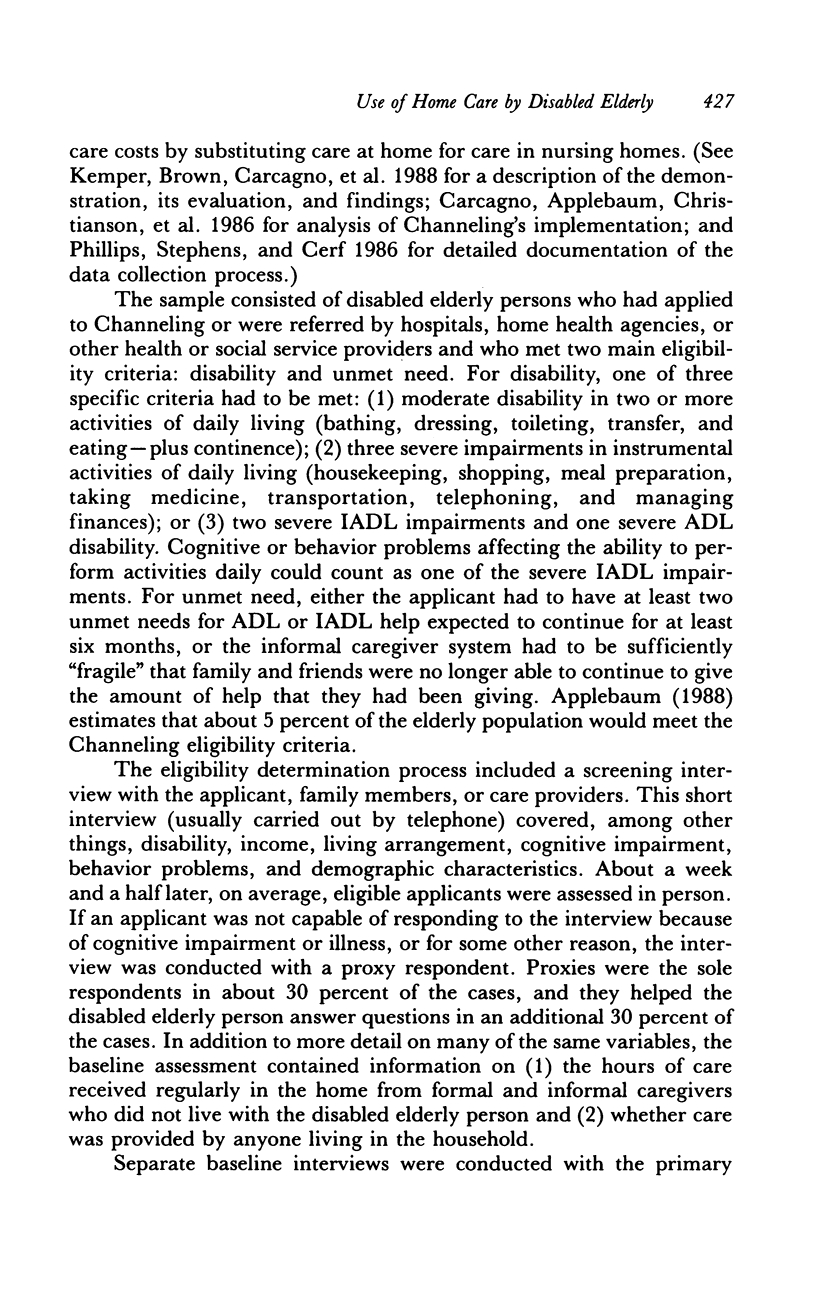
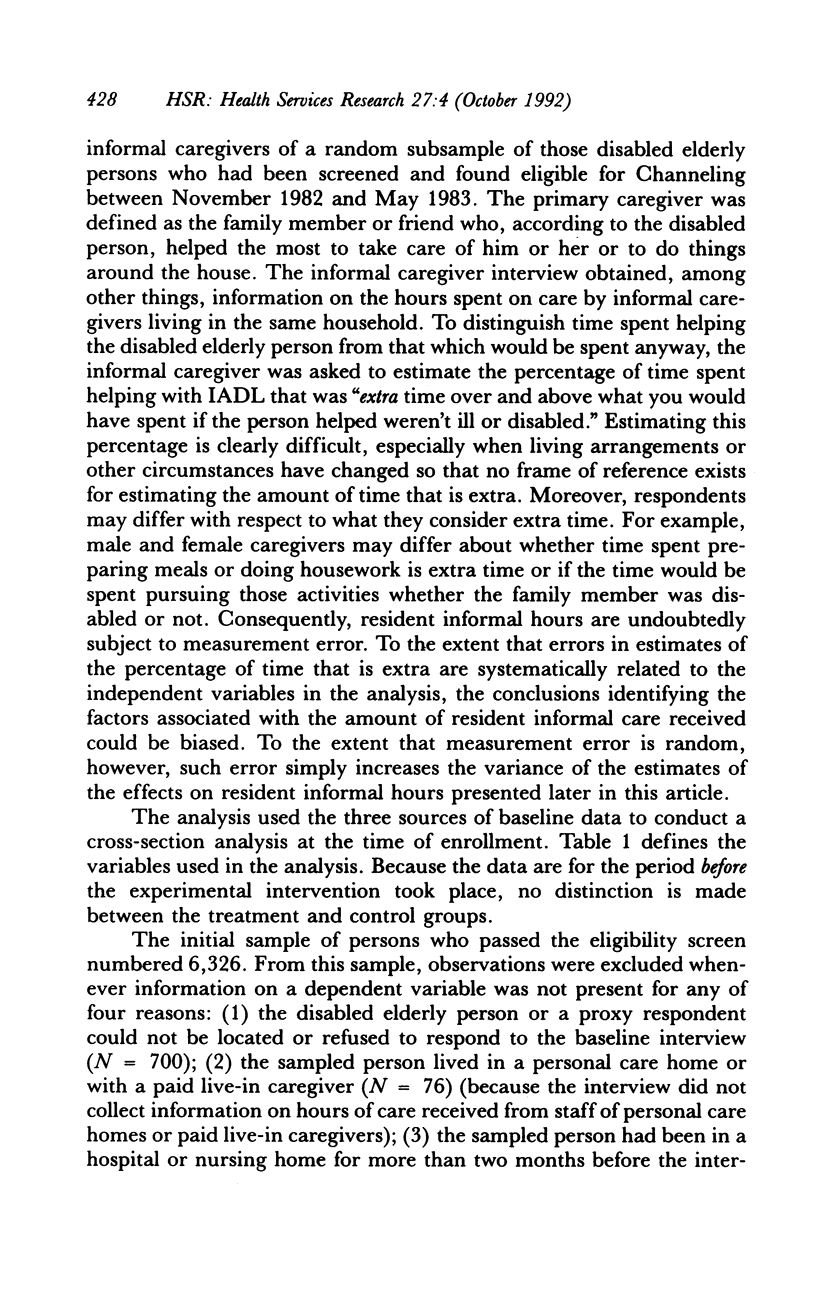
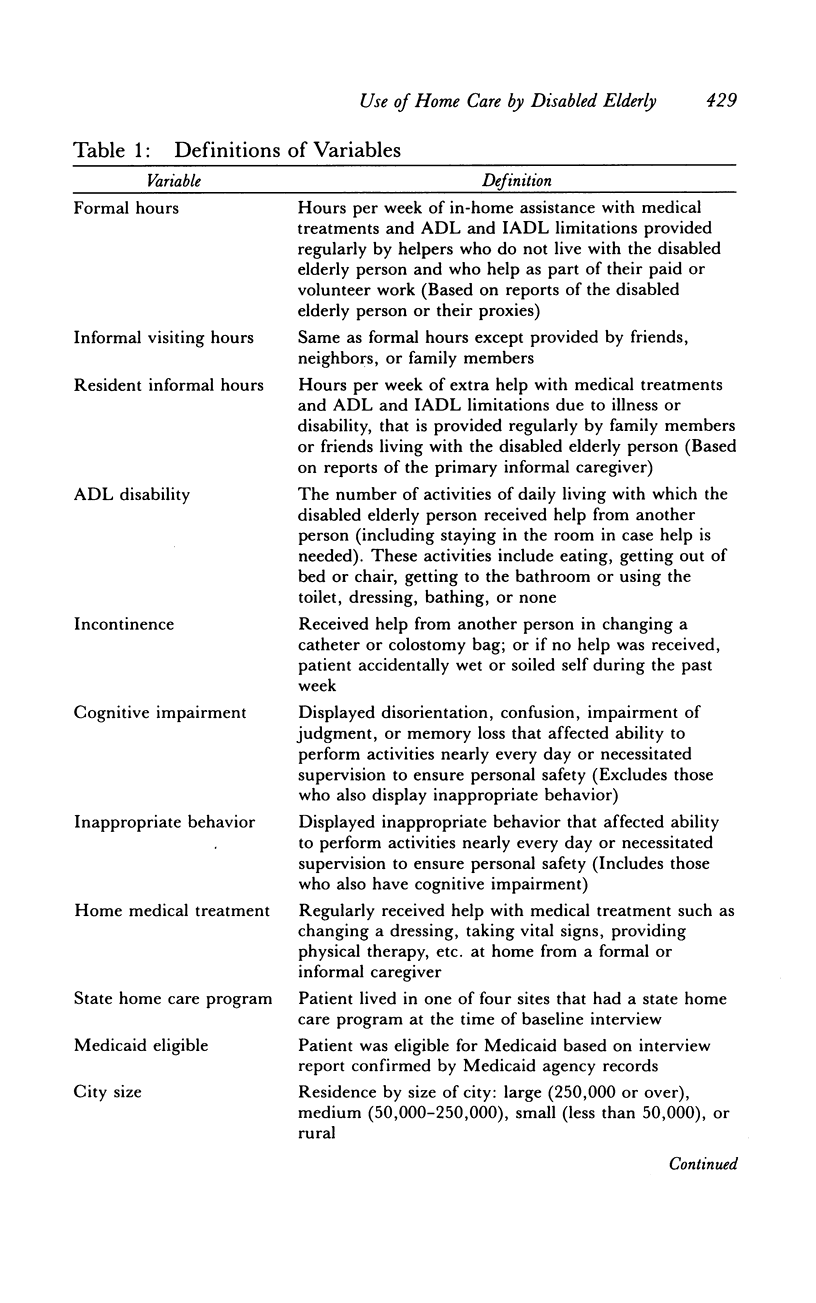
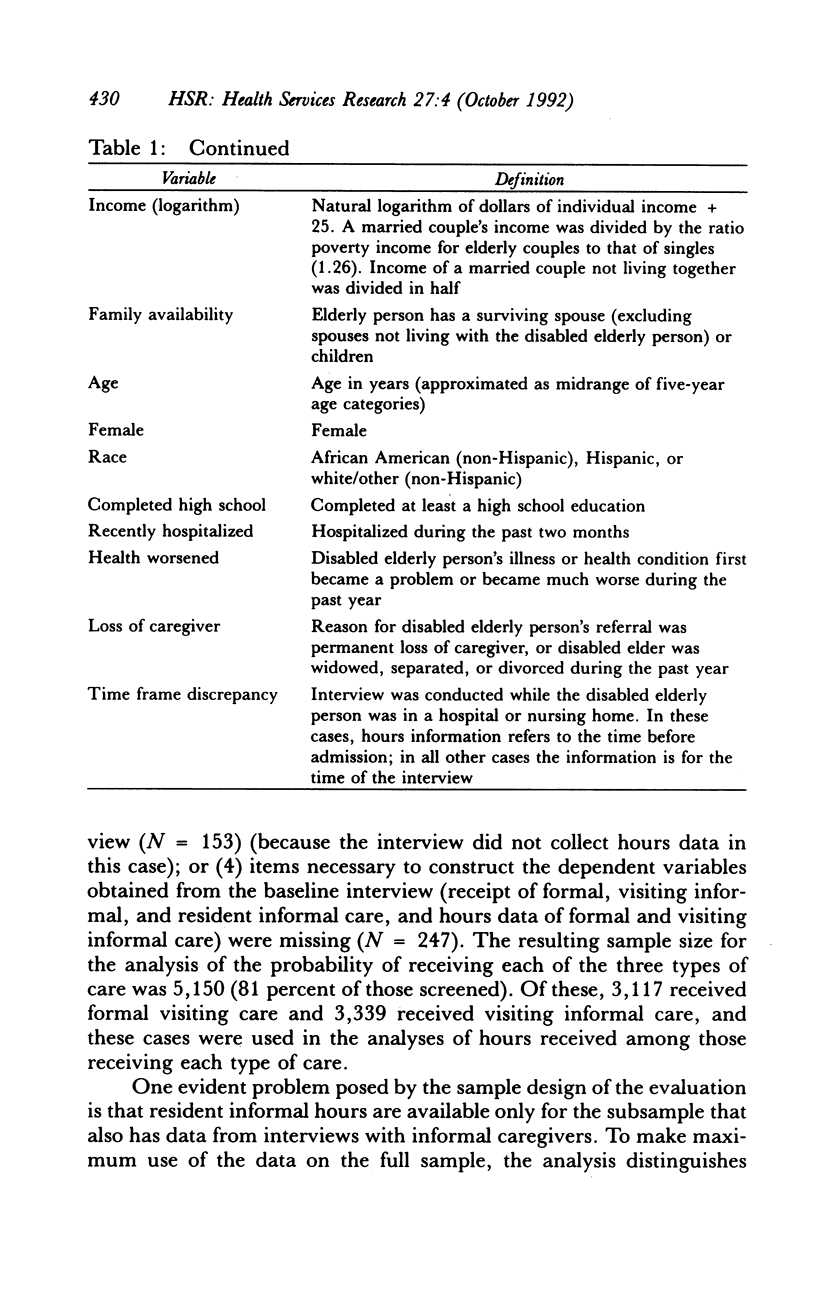
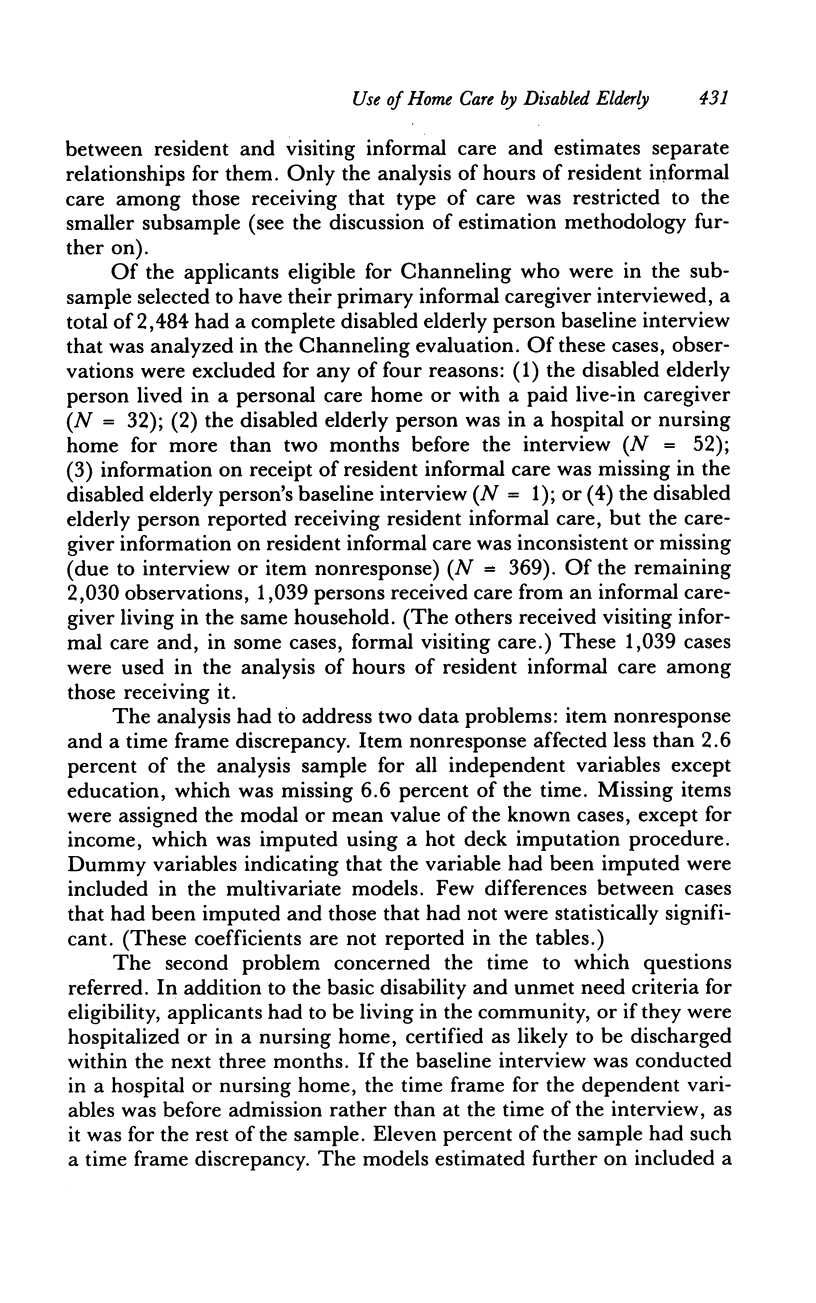
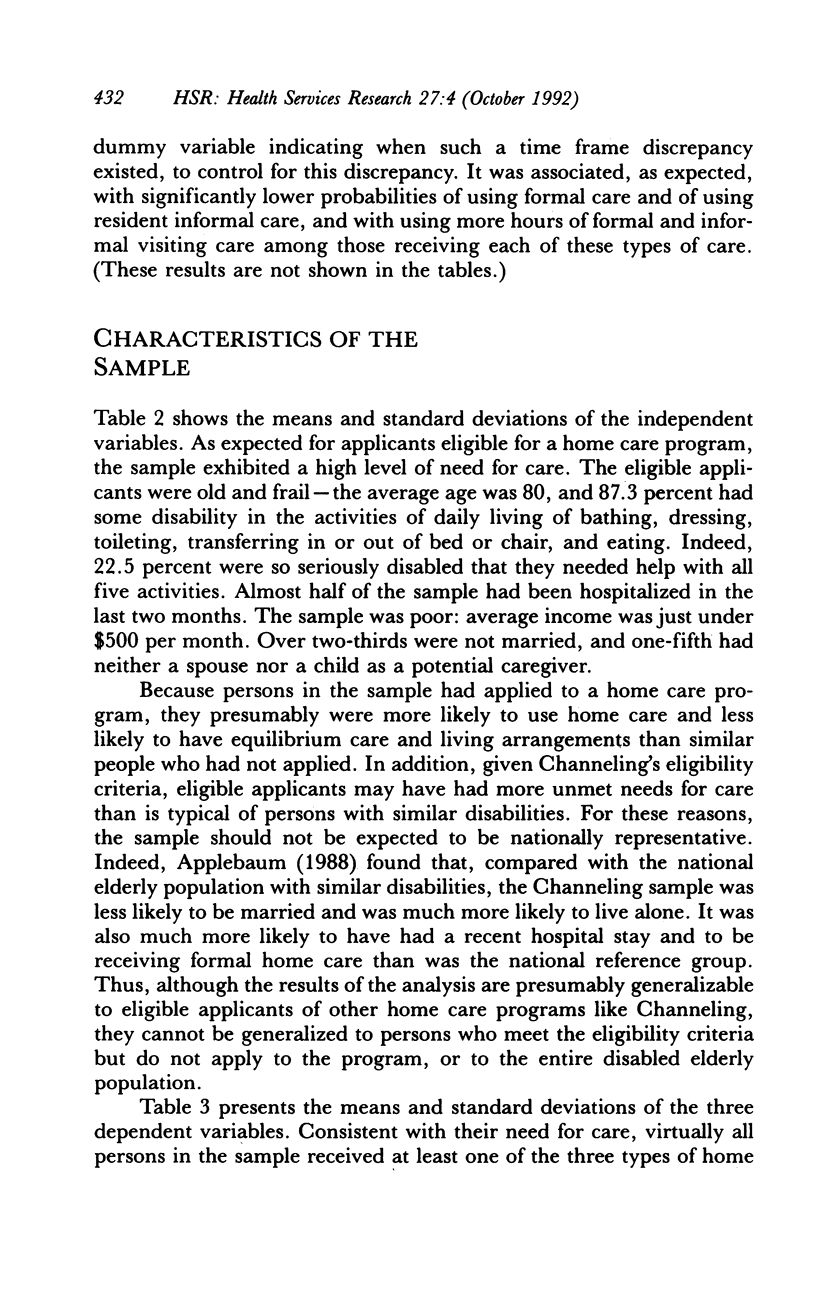
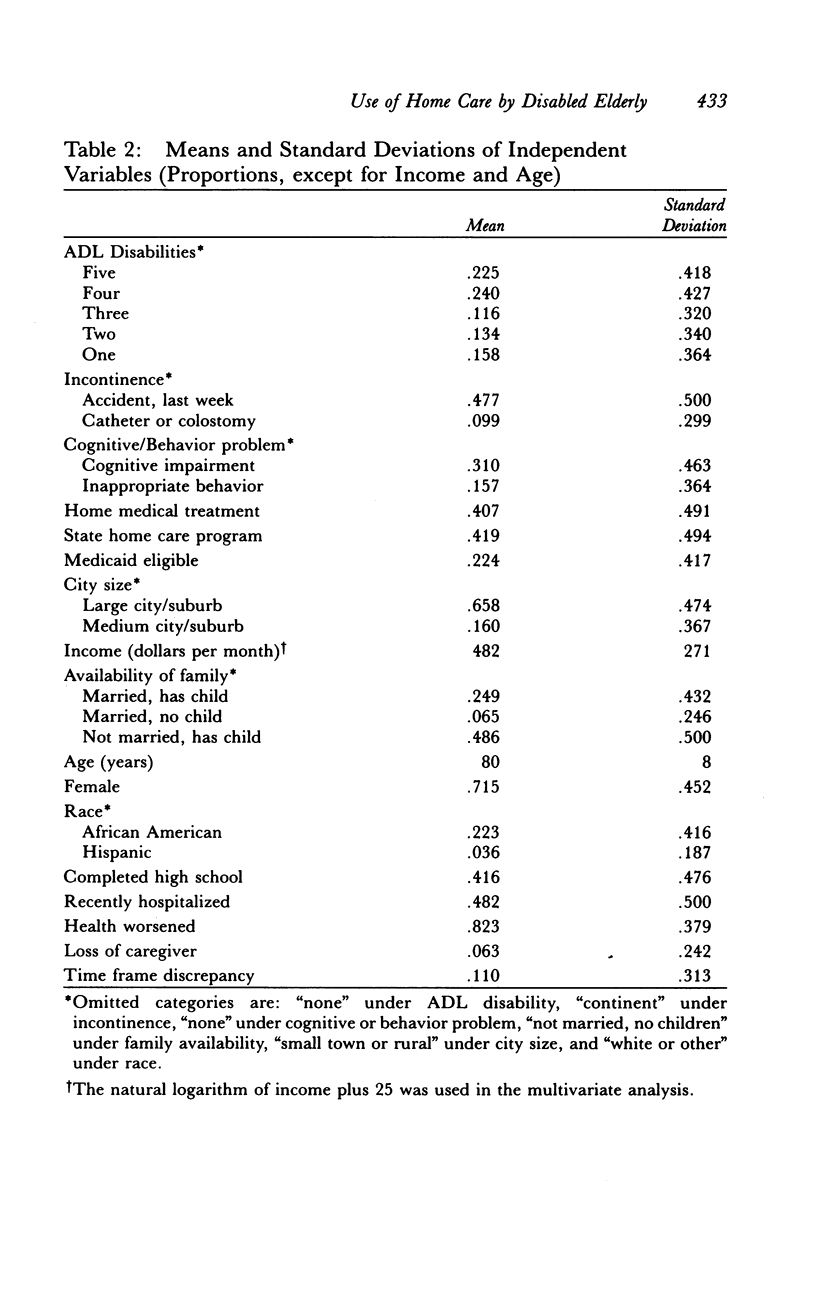
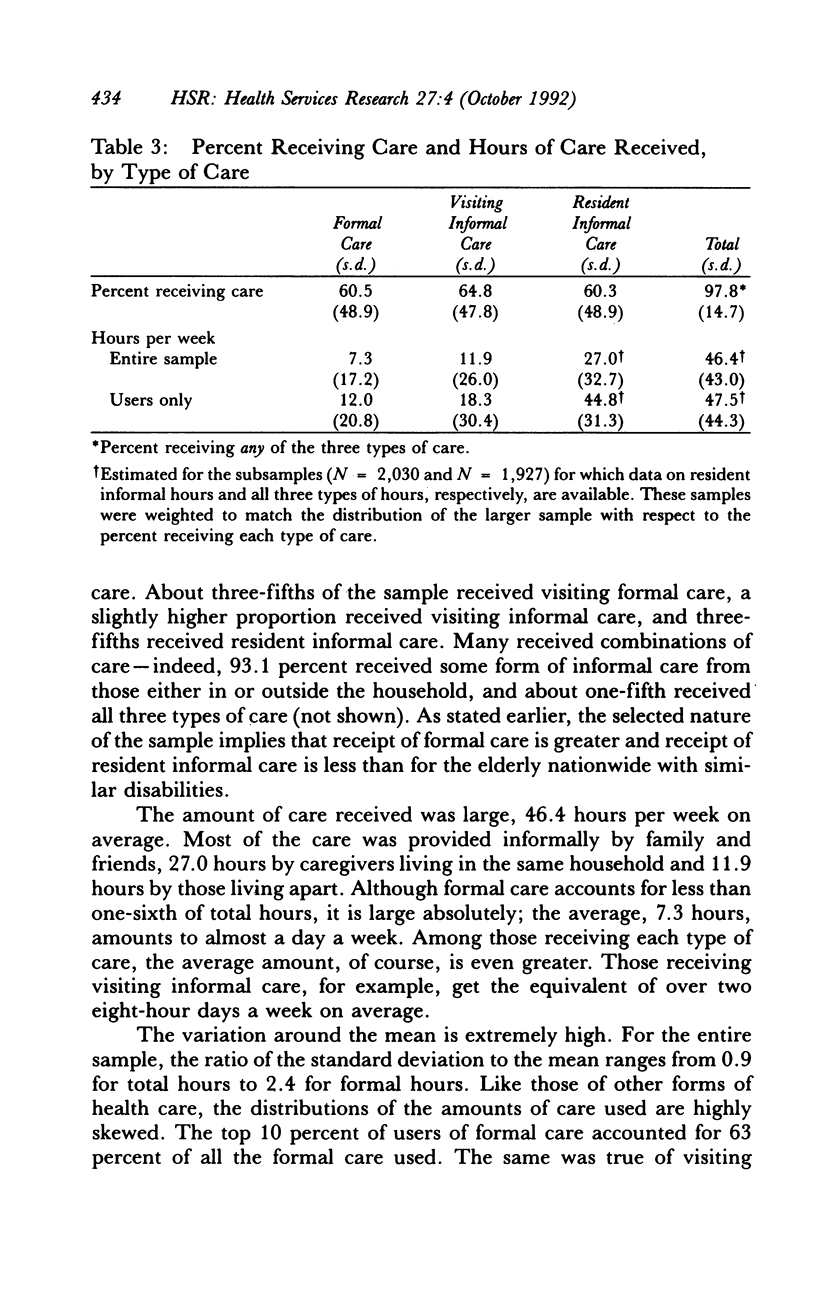
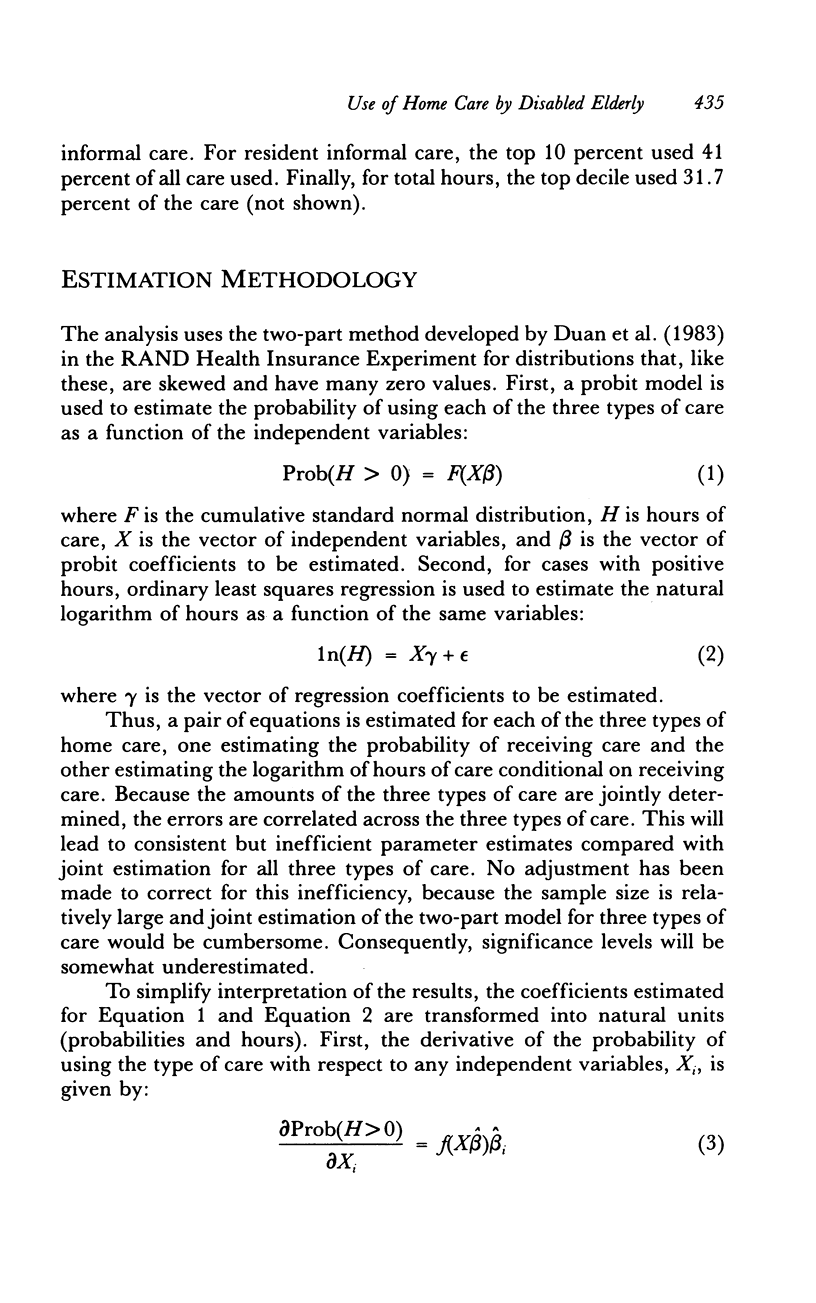
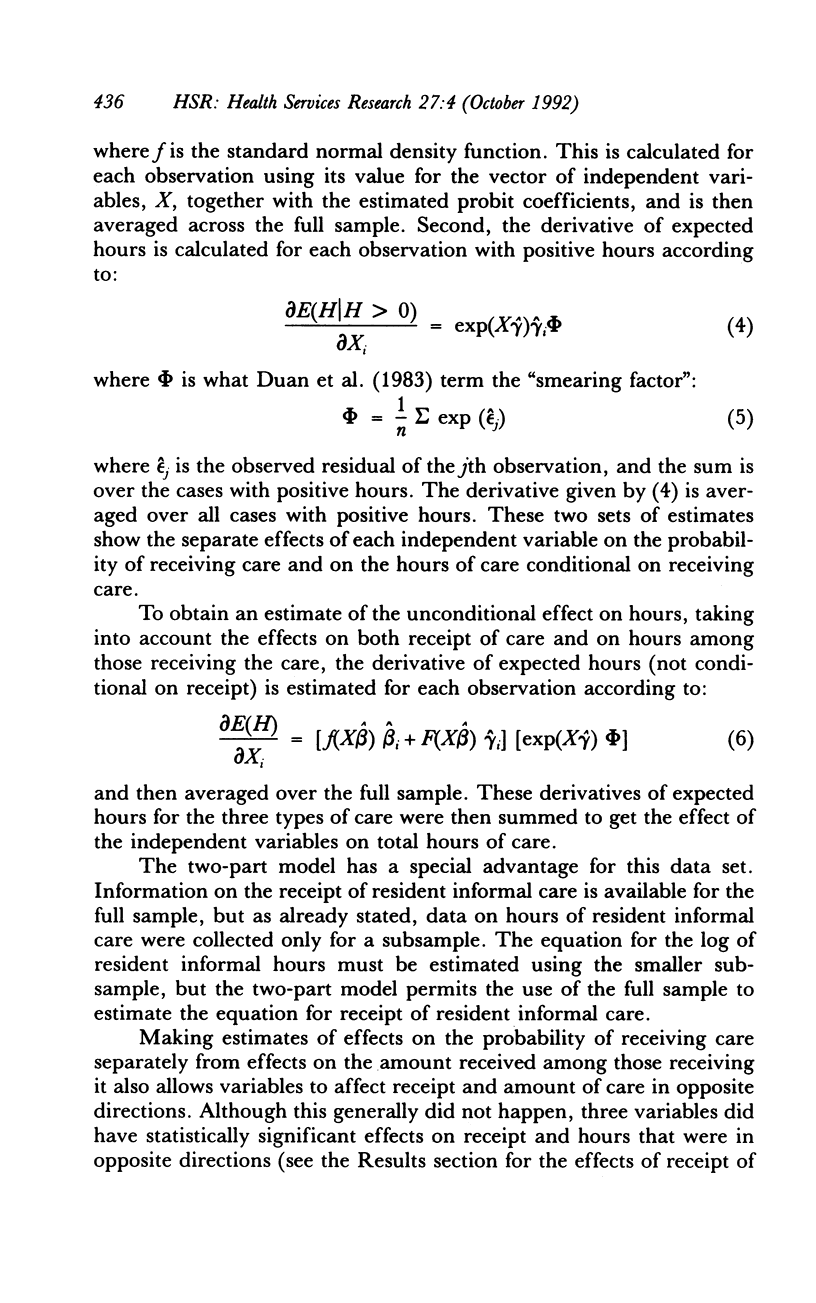
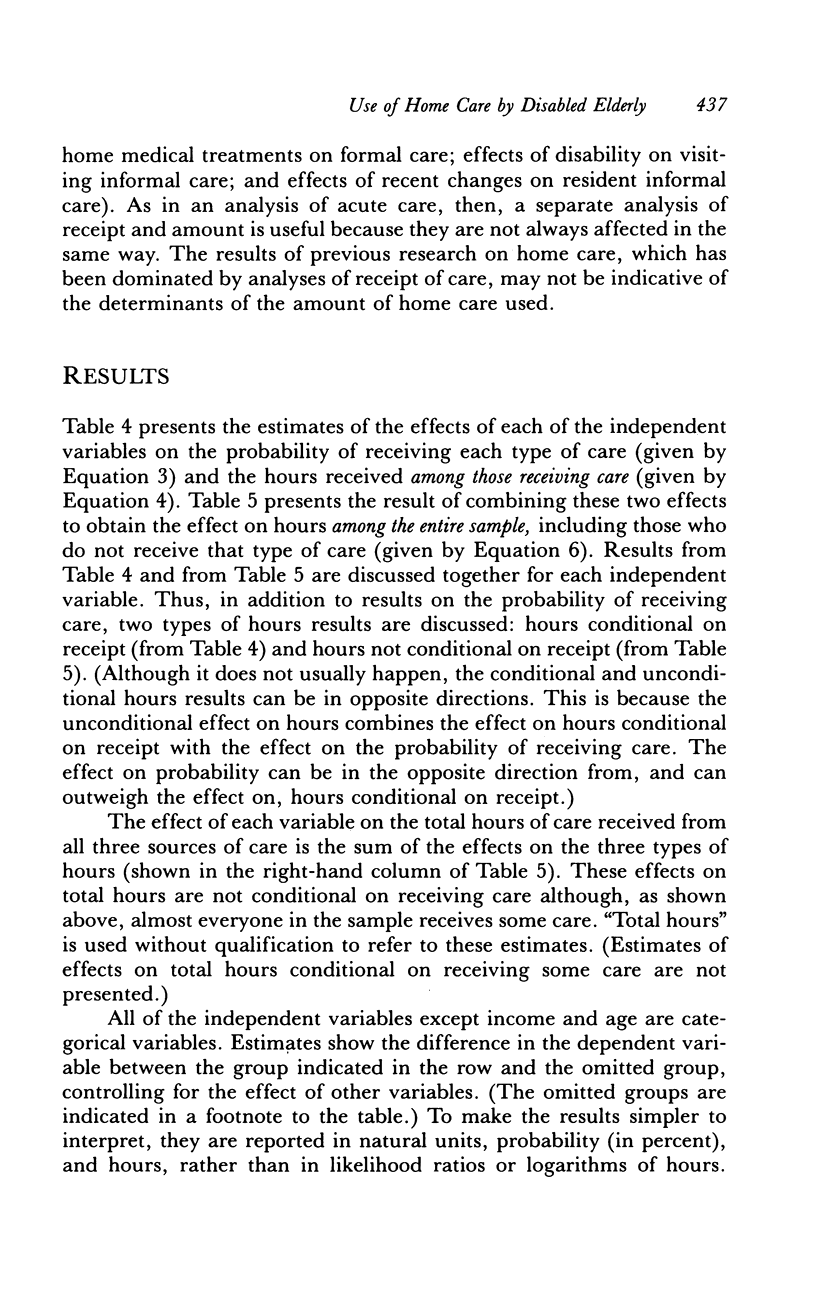

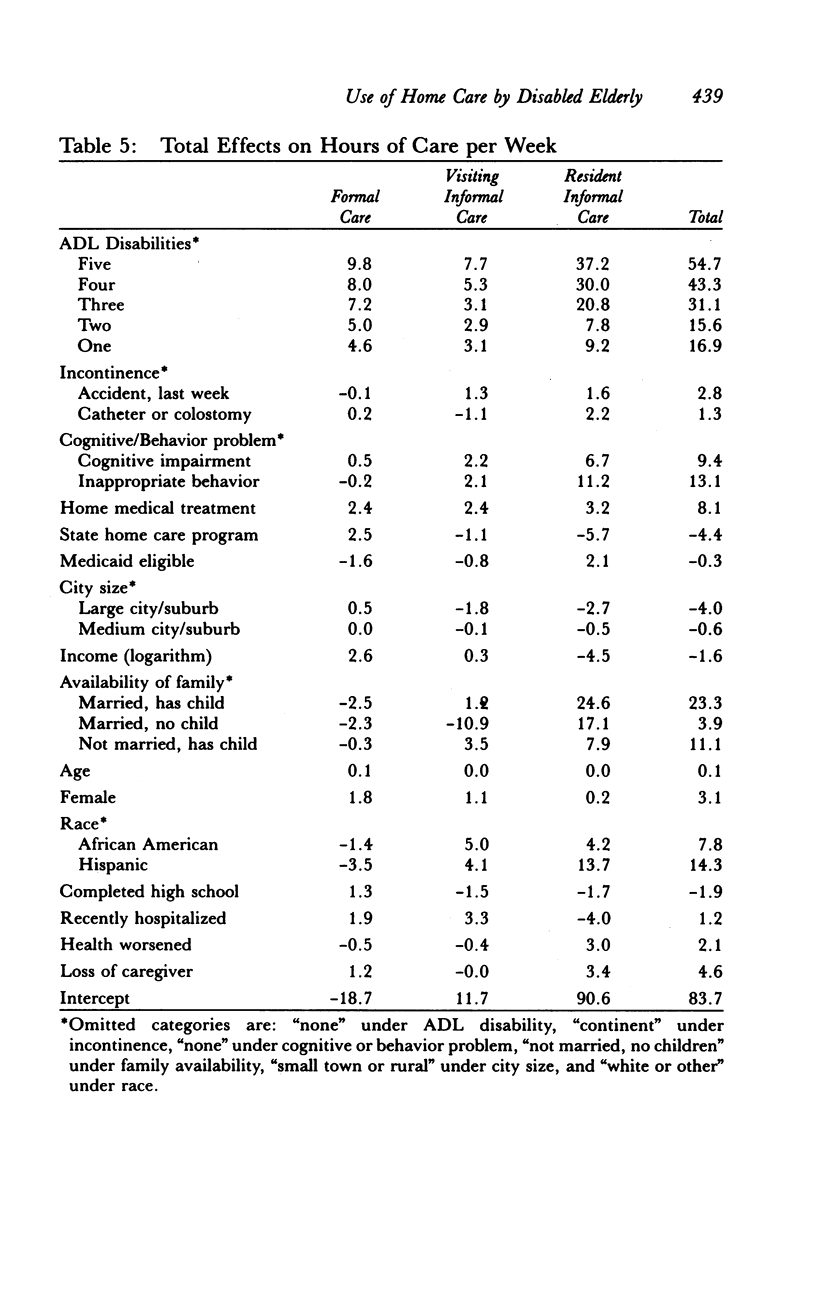
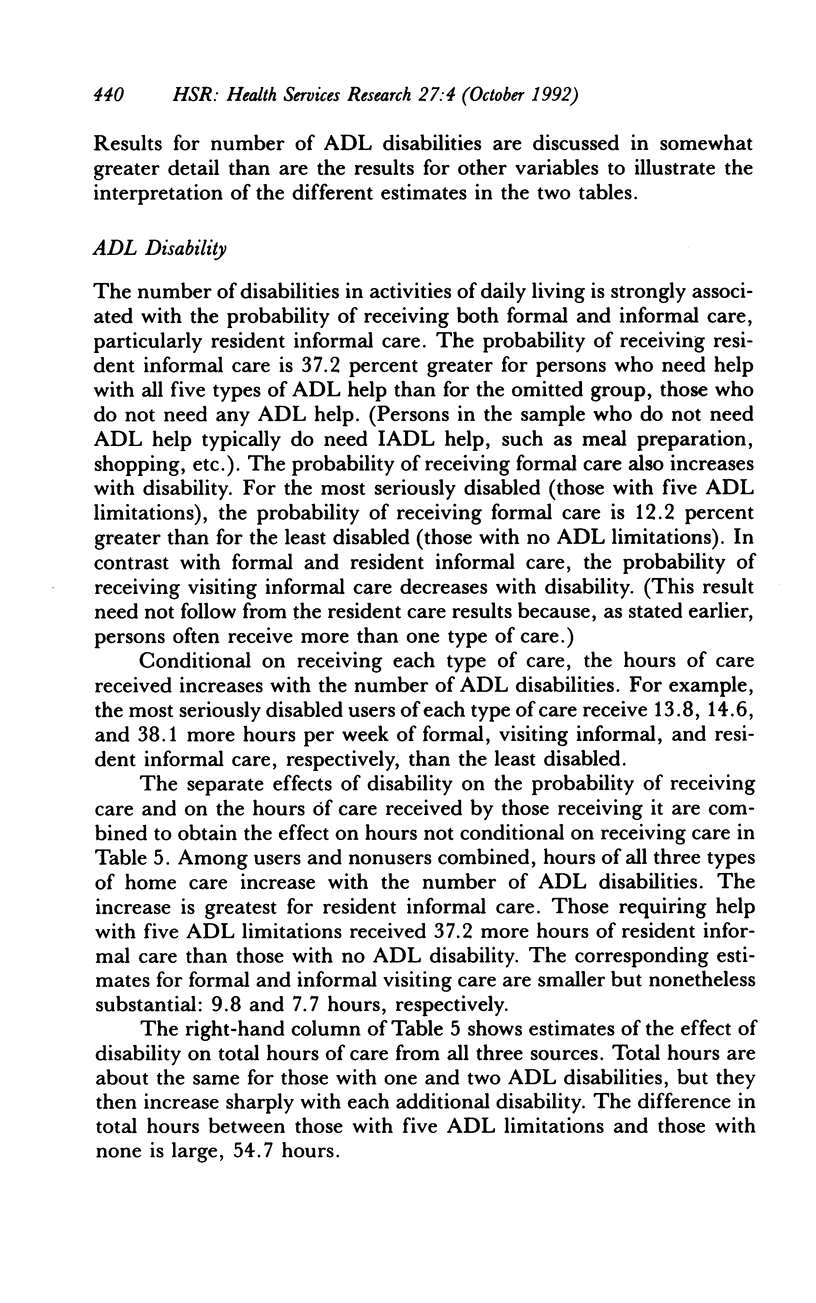
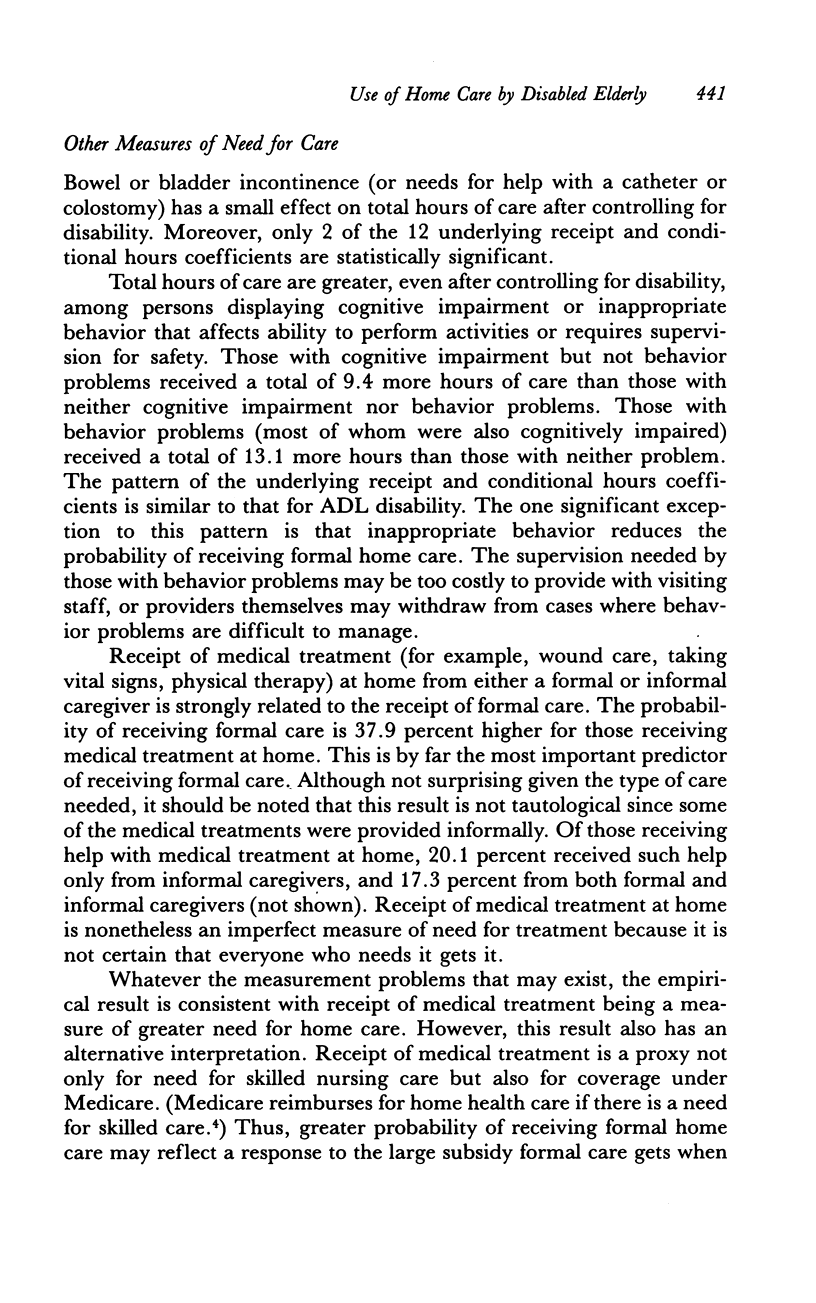
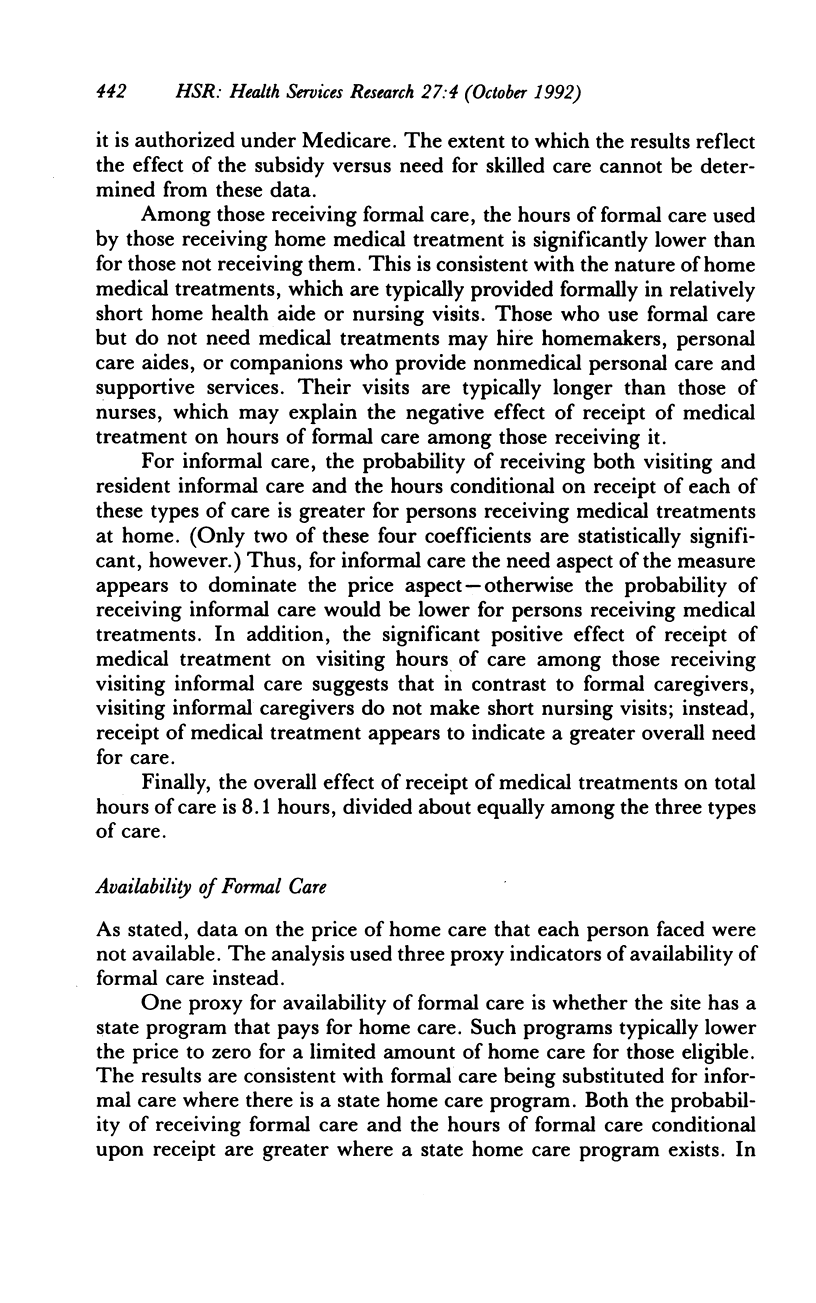
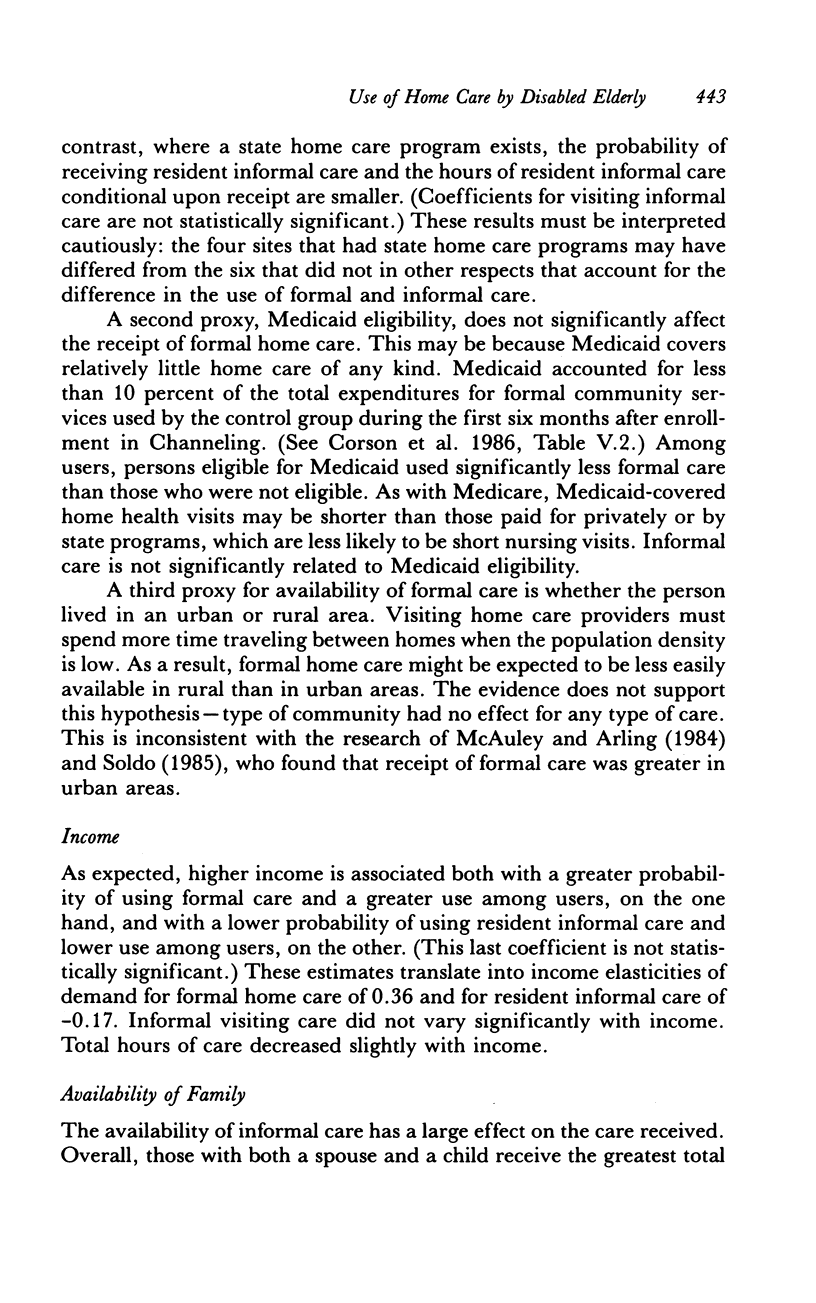
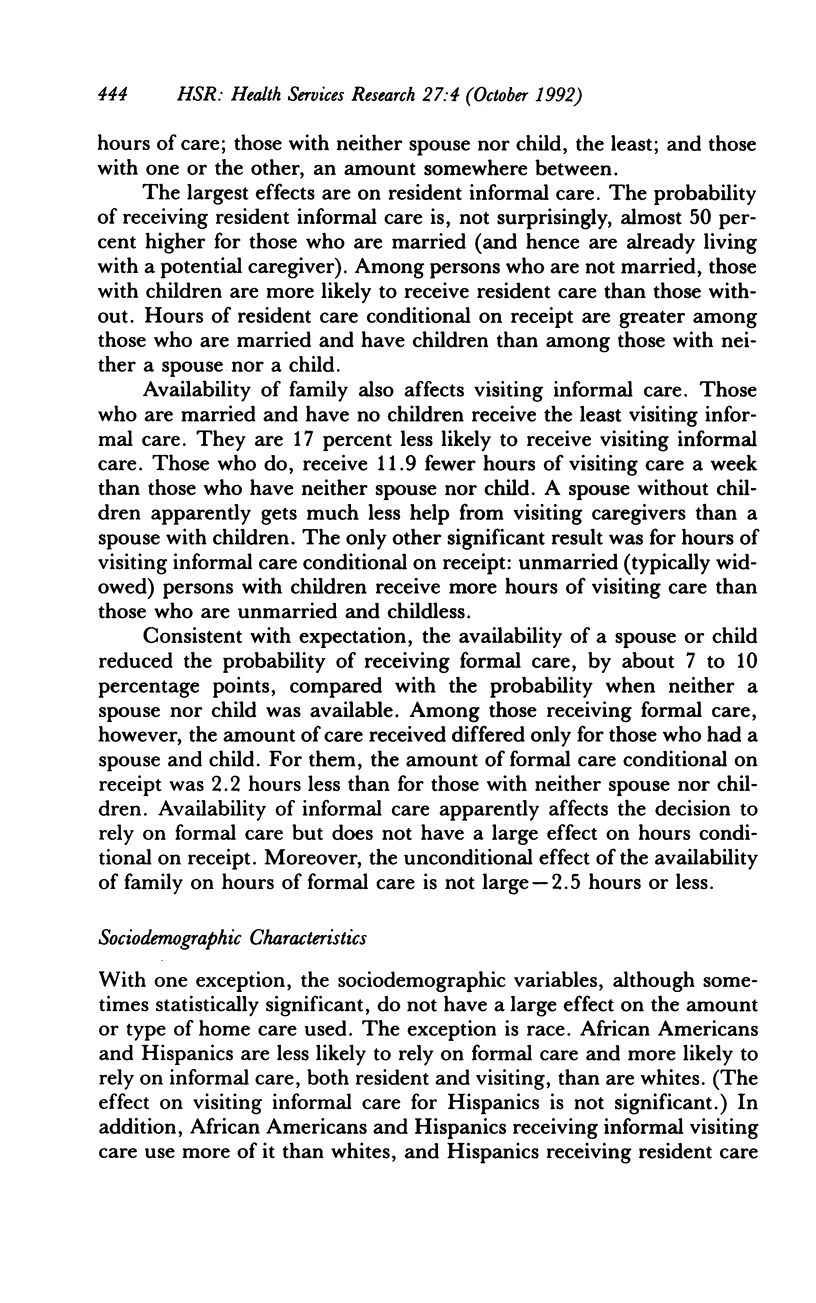
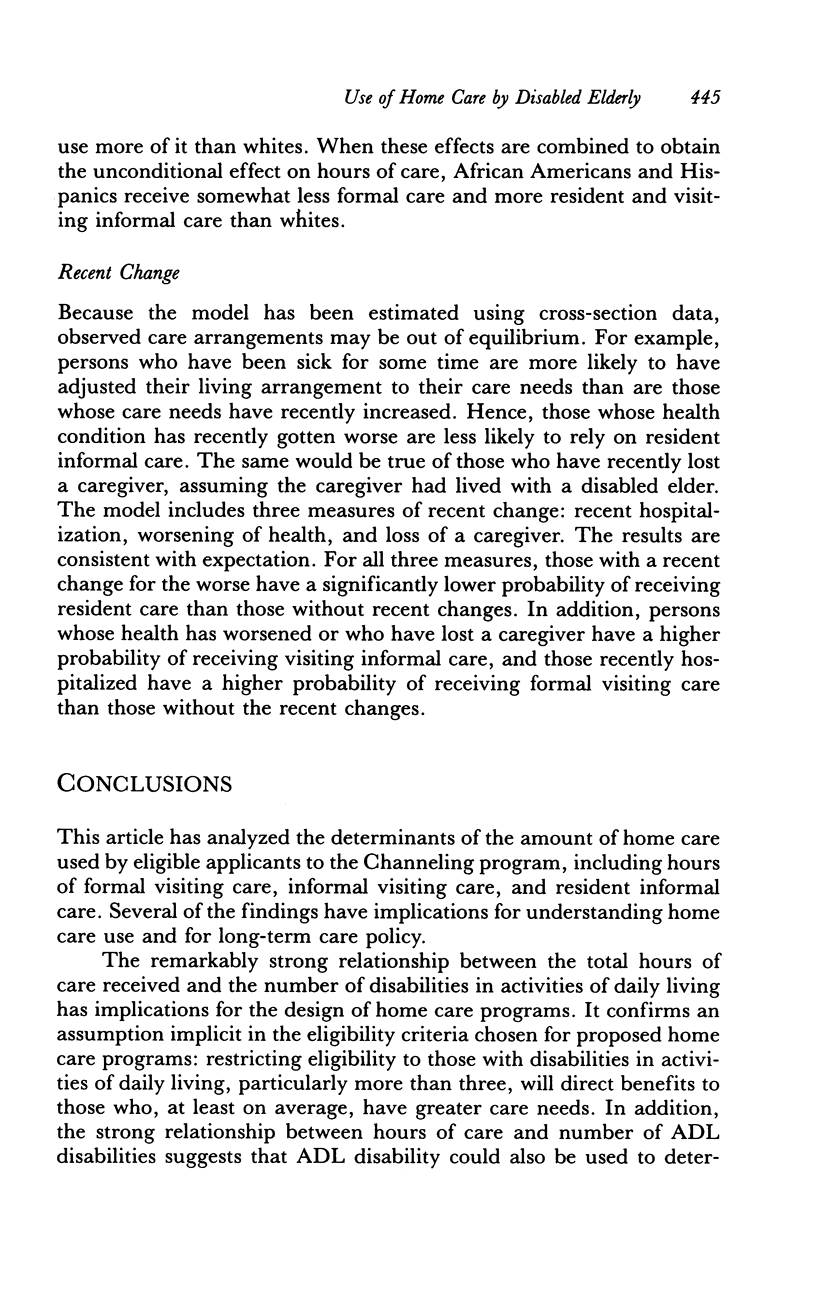
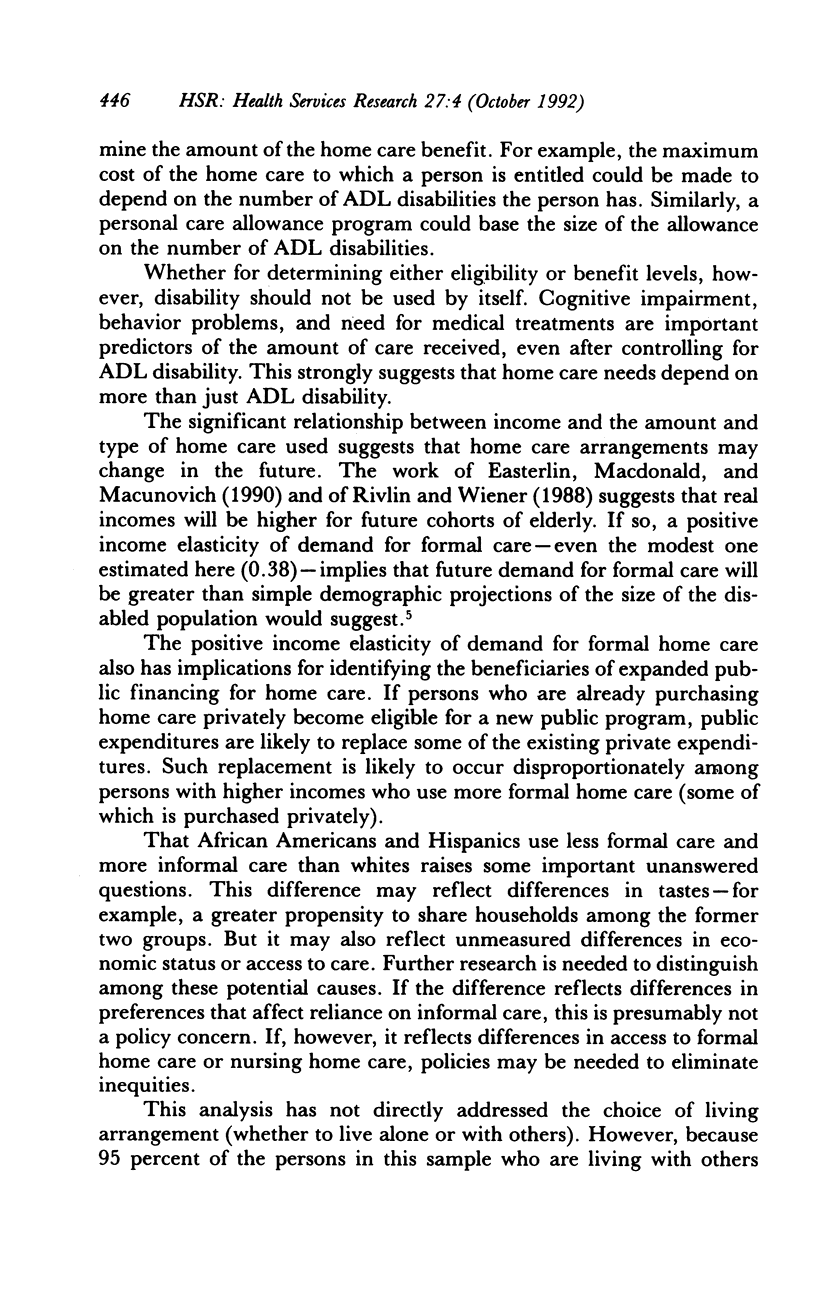
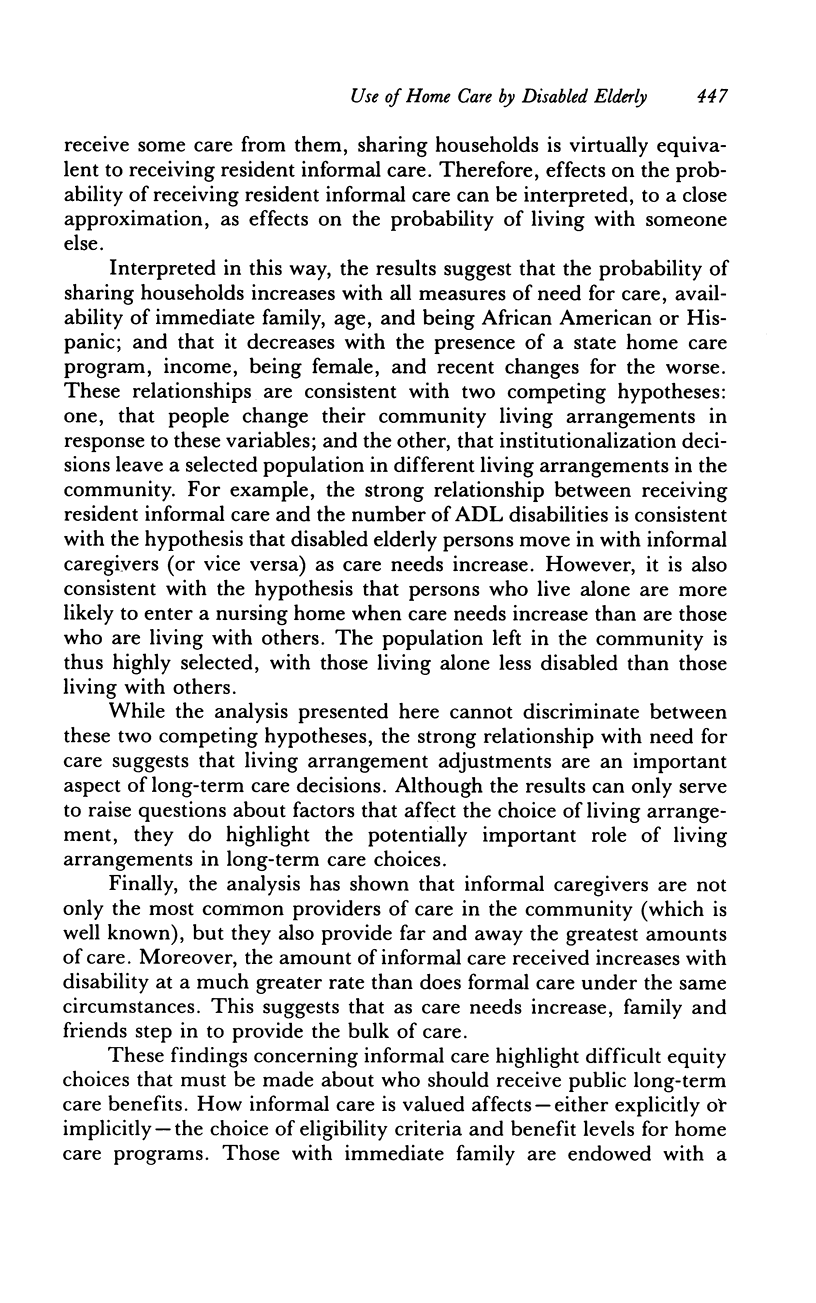
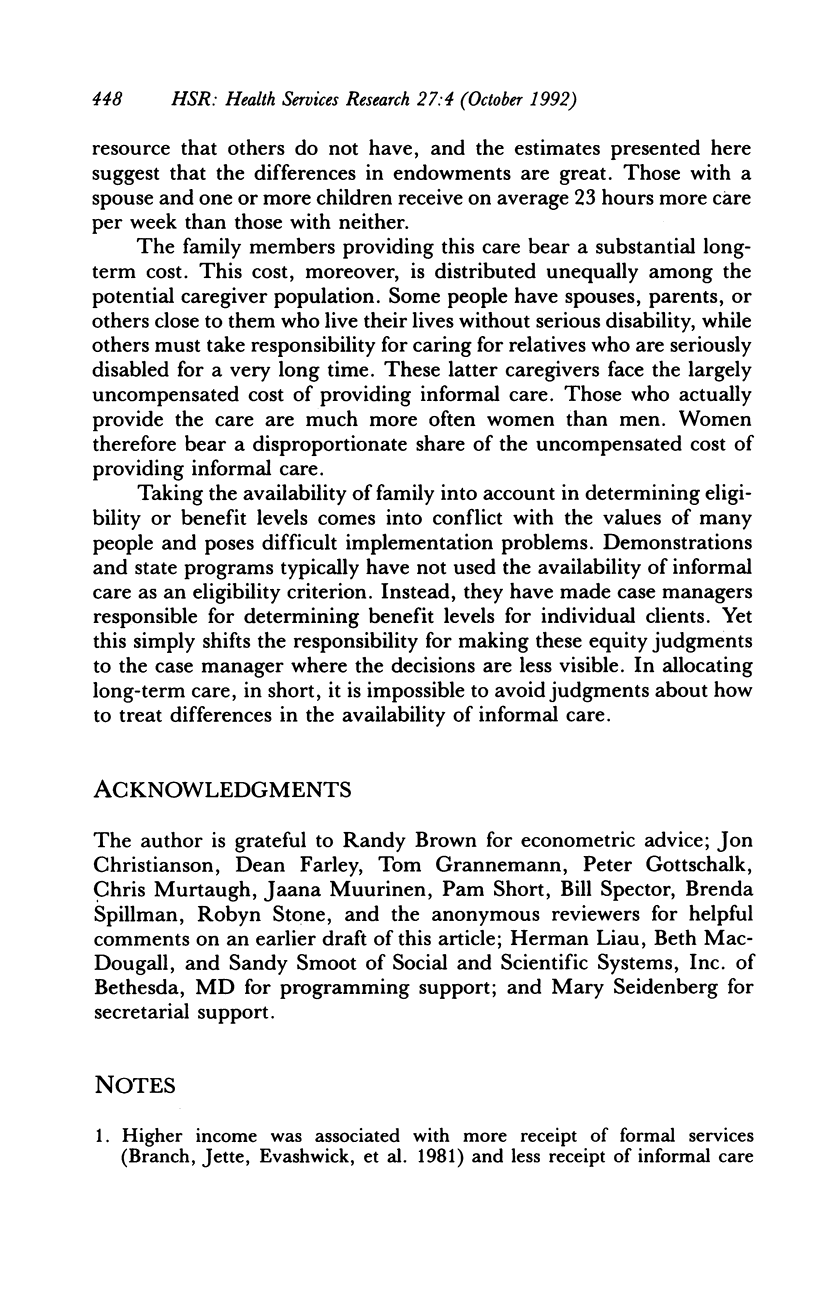
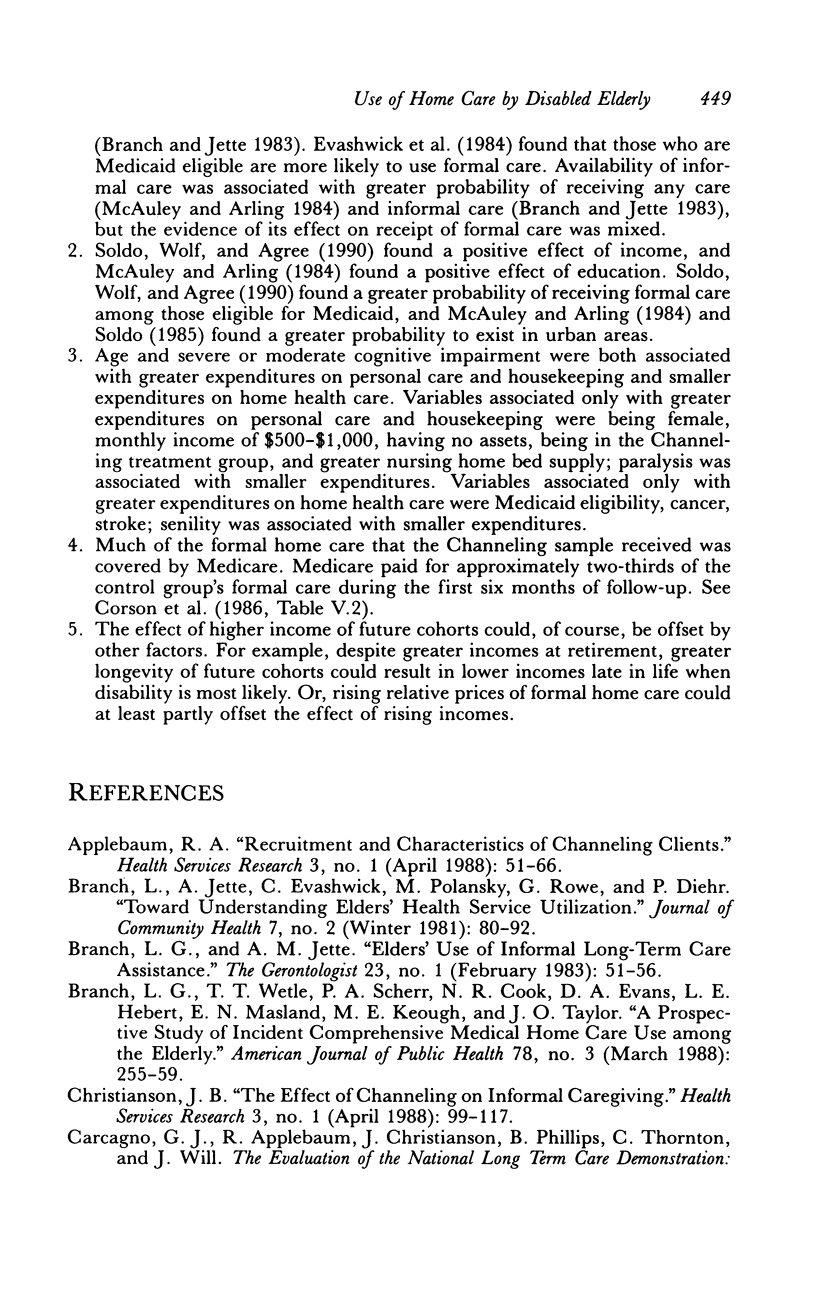
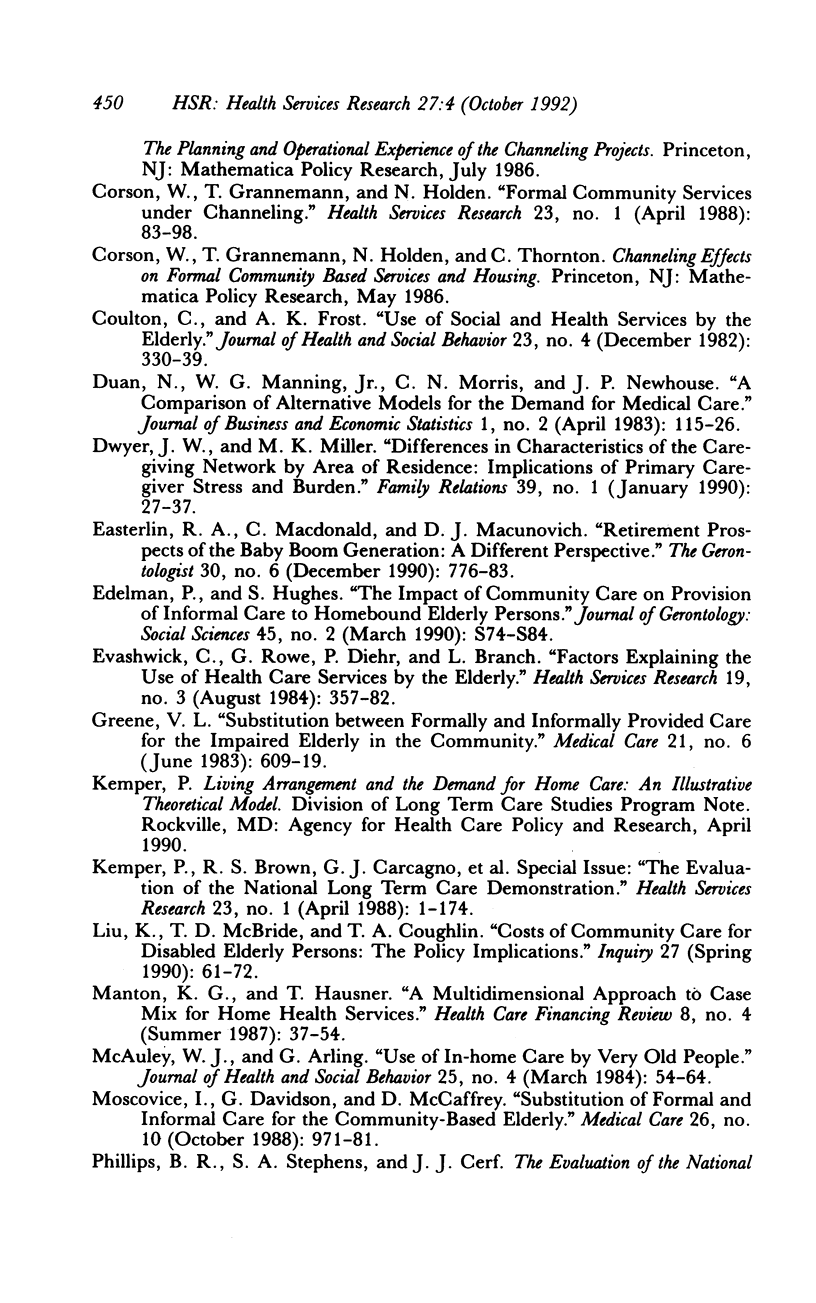

Selected References
These references are in PubMed. This may not be the complete list of references from this article.
- Applebaum R. A. The evaluation of the National Long Term Care Demonstration. 3. Recruitment and characteristics of channeling clients. Health Serv Res. 1988 Apr;23(1):51–66. [PMC free article] [PubMed] [Google Scholar]
- Branch L. G., Jette A. M. Elders' use of informal long-term care assistance. Gerontologist. 1983 Feb;23(1):51–56. doi: 10.1093/geront/23.1.51. [DOI] [PubMed] [Google Scholar]
- Branch L. G., Wetle T. T., Scherr P. A., Cook N. R., Evans D. A., Hebert L. E., Masland E. N., Keough M. E., Taylor J. O. A prospective study of incident comprehensive medical home care use among the elderly. Am J Public Health. 1988 Mar;78(3):255–259. doi: 10.2105/ajph.78.3.255. [DOI] [PMC free article] [PubMed] [Google Scholar]
- Branch L., Jette A., Evashwick C., Polansky M., Rowe G., Diehr P. Toward understanding elders' health service utilization. J Community Health. 1981 Winter;7(2):80–92. doi: 10.1007/BF01323227. [DOI] [PubMed] [Google Scholar]
- Christianson J. B. The evaluation of the National Long Term Care Demonstration. 6. The effect of channeling on informal caregiving. Health Serv Res. 1988 Apr;23(1):99–117. [PMC free article] [PubMed] [Google Scholar]
- Corson W., Grannemann T., Holden N. The evaluation of the National Long Term Care Demonstration. 5. Formal community services under channeling. Health Serv Res. 1988 Apr;23(1):83–98. [PMC free article] [PubMed] [Google Scholar]
- Coulton C., Frost A. K. Use of social and health services by the elderly. J Health Soc Behav. 1982 Dec;23(4):330–339. [PubMed] [Google Scholar]
- Easterlin R. A., Macdonald C., Macunovich D. J. Retirement prospects of the baby boom generation: a different perspective. Gerontologist. 1990 Dec;30(6):776–783. doi: 10.1093/geront/30.6.776. [DOI] [PubMed] [Google Scholar]
- Edelman P., Hughes S. The impact of community care on provision of informal care to homebound elderly persons. J Gerontol. 1990 Mar;45(2):S74–S84. doi: 10.1093/geronj/45.2.s74. [DOI] [PubMed] [Google Scholar]
- Evashwick C., Rowe G., Diehr P., Branch L. Factors explaining the use of health care services by the elderly. Health Serv Res. 1984 Aug;19(3):357–382. [PMC free article] [PubMed] [Google Scholar]
- Greene V. L. Substitution between formally and informally provided care for the impaired elderly in the community. Med Care. 1983 Jun;21(6):609–619. doi: 10.1097/00005650-198306000-00003. [DOI] [PubMed] [Google Scholar]
- Kemper P. The evaluation of the National Long Term Care Demonstration. 10. Overview of the findings. Health Serv Res. 1988 Apr;23(1):161–174. [PMC free article] [PubMed] [Google Scholar]
- Liu K., McBride T. D., Coughlin T. A. Costs of community care for disabled elderly persons: the policy implications. Inquiry. 1990 Spring;27(1):61–72. [PubMed] [Google Scholar]
- Manton K. G., Hausner T. A multidimensional approach to case mix for home health services. Health Care Financ Rev. 1987 Summer;8(4):37–54. [PMC free article] [PubMed] [Google Scholar]
- McAuley W. J., Arling G. Use of in-home care by very old people. J Health Soc Behav. 1984 Mar;25(1):54–64. [PubMed] [Google Scholar]
- Moscovice I., Davidson G., McCaffrey D. Substitution of formal and informal care for the community-based elderly. Med Care. 1988 Oct;26(10):971–981. doi: 10.1097/00005650-198810000-00005. [DOI] [PubMed] [Google Scholar]
- Soldo B. J. In-home services for the dependent elderly. Determinants of current use and implications for future demand. Res Aging. 1985 Jun;7(2):281–304. doi: 10.1177/0164027585007002007. [DOI] [PubMed] [Google Scholar]
- Soldo B. J., Wolf D. A., Agree E. M. Family, households, and care arrangements of frail older women: a structural analysis. J Gerontol. 1990 Nov;45(6):S238–S249. doi: 10.1093/geronj/45.6.s238. [DOI] [PubMed] [Google Scholar]
- Wan T. T. Functionally disabled elderly. Health status, social support, and use of health services. Res Aging. 1987 Mar;9(1):61–78. doi: 10.1177/0164027587009001003. [DOI] [PubMed] [Google Scholar]
- Williams B. C., Phillips E. K., Torner J. C., Irvine A. A. Predicting utilization of home health resources. Important data from routinely collected information. Med Care. 1990 May;28(5):379–391. doi: 10.1097/00005650-199005000-00001. [DOI] [PubMed] [Google Scholar]


